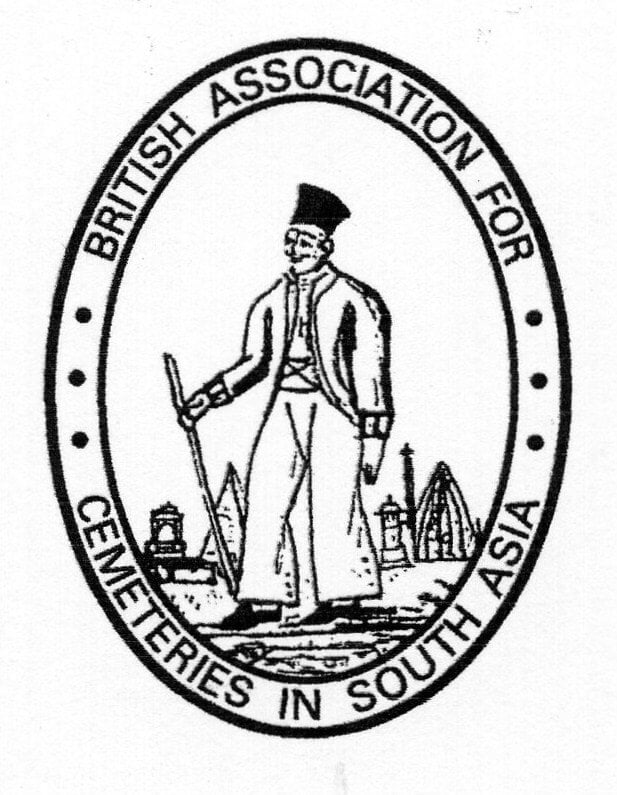Home › Forums › Support › Research questions › Help please – Poss Anglo Indian marriage
- This topic has 13 replies, 4 voices, and was last updated 5 years, 3 months ago by
Andrew Edington Cumine.
-
AuthorPosts
-
03/08/2018 at 20:37 #54243
CATHERINE
ParticipantEvening all, I hope someone out there could help with my ‘brick wall’.
My 4th Great Grandparents, Joseph SMITH & Sarah BROWN were married on 15/7/1813. Sarah is noted as a widow. Joseph was a pipe/fife major with the Bengal Artillery. They were married with the permission of Col.John HORSFOLD.
Their last child, Sophia is my 3rd Great Grandmother.
I have looked into Col.John HORSFOLD and he actively encouraged the British men to marry Indian women. I have my suspicions that Sarah may have been an Indian lady. If the Father died the children were placed in the orphanage under the care of the regiment.
When their Daughter Sophia married in 1853 she is shown as Assistant mistress at the orphanage. The marriage register shows the other girls on that page had a link to the orphanage.I would really like to get to the bottom of SARAH BROWN, I have carried out searches trying to find her but have had no luck. Can anyone help please, Thank-you.
04/08/2018 at 18:00 #54253Lorrick
ParticipantCatherine, Have you tried Family Search? I have just put in Sarah Brown and a lot of names came up at around that time and as you will have a lot more info you should be able to sort through it..Rick
09/08/2018 at 20:27 #54500CATHERINE
ParticipantThanks for your reply Rick, I’ve looked at Family search but have not managed to whittle it down to any of these.
When she married Joseph SMITH she is recorded as a Widow, do you think this would’ve been her married name?15/08/2018 at 05:51 #54548Rosemarie
ParticipantDear Catherine
There was a Sarah Bartley married to a Samuel Brown in 1808 in Bengal. There are deaths for 2-3 Browns without first names prior to 1813. This Sarah would be a widow in 1813. You said that you had the birth showing that Sarah was a widow.
You really need to see Sarah’s first marriage and how she was described. The fail safe way to tell if Sarah, or her husband, was Anglo Indian is by a DNA test. Otherwise it is very difficult as many of the poor young women had their surnames left off the register when they married and also assumed English first names. In other words, they are difficult or impossible to track down. It means searching forever, in some cases, or having a DNA test which will show you definitely that one, or more, of your relatives was or was not Indian.
I hope that helps. Sometimes the celebrant would put “native woman” but it depends on where she was married and when
Rosemarie Ryan
20/08/2018 at 10:19 #54746Andrew Edington Cumine
ParticipantIt is likely that Joseph Smith was himself Anglo Indian. He would probably not otherwise have been a ‘pipe/fife-major’, since boys whose parents were not both European were excluded from any military role other than as fifers, drummers, or farriers: it’s quite a clue! I suspect Joseph was Anglo Indian in his own right (probably a European father and Indian [or Anglo-Indian in HER own right] mother). Or possibly even both his parents had European fathers and Indian (or Anglo-Indian) mothers.
Sincerely,
Andrew CumineAndrew
20/08/2018 at 19:25 #54772CATHERINE
ParticipantRosemary, thankyou for the info. I’m seriously considering a DNA test!!
20/08/2018 at 19:27 #54773CATHERINE
ParticipantAndrew, my head is blown by this info. Could you point me in the right direction for his army record, also his birth… would this have been logged in the usual way? I have attached a screen shot from FIBIS search, it shows Joseph but I am unsure as to what I am reading. Any ideas?
So many questions are going round my head at the moment! CathAttachments:
You must be logged in to view attached files.21/08/2018 at 07:51 #54892Andrew Edington Cumine
ParticipantDear Cath,
Thanks. The attachment makes it clear that Joseph was a drum major (presumably at the time of his death), that he didn’t arrive on any ship (from the UK), but was brought up at Lower Orphan School. I suggest that this means he was born and raised in India. His enlistment in 1792 is significant in that it was exactly around this time that the East India Company clamped down on the participation of soldiers’ sons not born of two European parents by limiting their job opportunities in the military to fifers, drummers, or farriers. My own family tree in India is dripping with musicians! It is most likely that Joseph was in the same regiment as his father – looks like Bengal Army (ie: not British Army), although the father may well have been recruited into the Bengal Army the UK. His birth may be recorded somewhere. Try the India Office records of baptisms, marriages and burials on the ‘Find My Past’ website. As for the widow Sarah Brown, ‘Sarah’ is a common name for an Indian lady being baptised prior to marriage, so my supposition is that she is an Indian (or Anglo-Indian) lady since in 1813, Joseph would not have been in a position to marry a European lady. She would of course have been baptised prior to her first marriage. Don’t be too tempted by the DNA. It proves nothing, only that you have (or have not) ‘Indian’ ancestors. It’s MUCH more rewarding to establish the paper trail first, find out who they were, THEN confirm that using the DNA, rather than the other way around!
Hope this helps. Please be in touch again!
Sincerely,
AndrewAndrew
21/08/2018 at 07:59 #54893Rosemarie
ParticipantAndrew is correct about his occupation being tied to an Anglo-Indian. The fact that he was from the Lower Orphan School basically confirms that he was Anglo-India as that it was the Upper and Lower Orphan Schools were for. The Upper was for officers’ children with Anglo-Indian mothers and the Lower was for other men in the army who had Anglo-Indian children.
As that was the case, it is more likely than not that Maria was Anglo-Indian too.
You need to go to the source documents but for those two it is almost a lay down misere.
Rosemarie Ryan
21/08/2018 at 15:18 #54898Andrew Edington Cumine
ParticipantDear Cath,
I have just been looking at that attachment again and notice that it clearly says ‘Bengal Army European Soldiers’ at the top. This description is at odds with Joseph’s apparent upbringing at the Orphan School. Also, “Invalid Veteran Company” seems (via a Google Search) to be shorthand for “European Invalid Veteran Company”, so there’s another contradiction to wrestle with. Fascinating.
Best wishes,
AndrewAndrew
12/01/2019 at 20:43 #57750CATHERINE
ParticipantHello again Andrew
Im still trying to get to the bottom of this.Do you know how old the boys would’ve been enlisted? Im guessing 16-18 years?
Thanks
13/01/2019 at 16:30 #57767Andrew Edington Cumine
ParticipantDear Cath,
I think younger. And I have just checked a copy of Valerie Anderson’s 2015 book ‘Race and Power in British India’, to find that she confirms a General Order of 14 June 1798 stating that “all fifers and drummers for sepoy regiments should come from military orphan schools, joining when they were 13 or 14″. I have also checked Christopher Hawes’ 1996 book ‘Poor Relations’, and he notes that ‘The boys returned to military life as early as the age of ten, but mostly at twelve or thirteen …”.
My own Great-Grandfather retired after 25 years’ service in the band of the Governor of Madras in 1907, suggesting a start-date of 1882, when he was 15.
So take your pick from 10 to 15, but I think 16-18 was probably too old.
Hope that helps.
Best,
AndrewAndrew
19/01/2019 at 20:36 #57864CATHERINE
ParticipantEvening Andrew. Thank you for providing the information above. It has lead me on a journey this week!
I have found 2 baptisms that could well be my Joseph:1. Baptised 4/12/1783 – Father Vincent Smith – at Fort St George, Madras. No Mother details
2. Born 17/6/1776 Baptised 13/7/1776 – Father Joseph Mother Elizabeth – at Chingleput, MadrasIf we go on the age at enlistment being 10 to 15 it could be either of them 1. being 16 and 2. being 9/10
I would be interested to know your thoughts.
Is there anywhere I can search the Bengal army for records?Thank you again for your time. Catherine
21/01/2019 at 09:33 #57871Andrew Edington Cumine
ParticipantDear Cath,
Thanks.
The Joseph name of father and son may be a clue, though 9-10 does sound a bit young. I’d work on both. If either of the fathers you’ve found was in the Bengal Army, it’s surprising that their children were born in the Madras Presidency. Have a look again for baptisms in Bengal. Having said that, it is not impossible that men might have transferred.
Have you established whether ‘your’ Joseph had brothers or sisters? The baptism record may contain information about the father’s occupation. I have a book about Chingleput, and it seems that the first English Governor of thr fort there (in the 1750s … ?) was a certain Captain Smith (also, my book says, the founder of Freemasonry in India). That’s a red herring, probably.
On the Bengal Army, maybe you need to consult Peter Bailey’s book ‘Researching ancestors in the East India Company Armies’. It’s a FIBIS book. Lots of information available at the British Library in London. And probably on the FIBIWIKI section of the FIBIS website too.
Best,
AndrewAndrew
-
AuthorPosts
- You must be logged in to reply to this topic.




